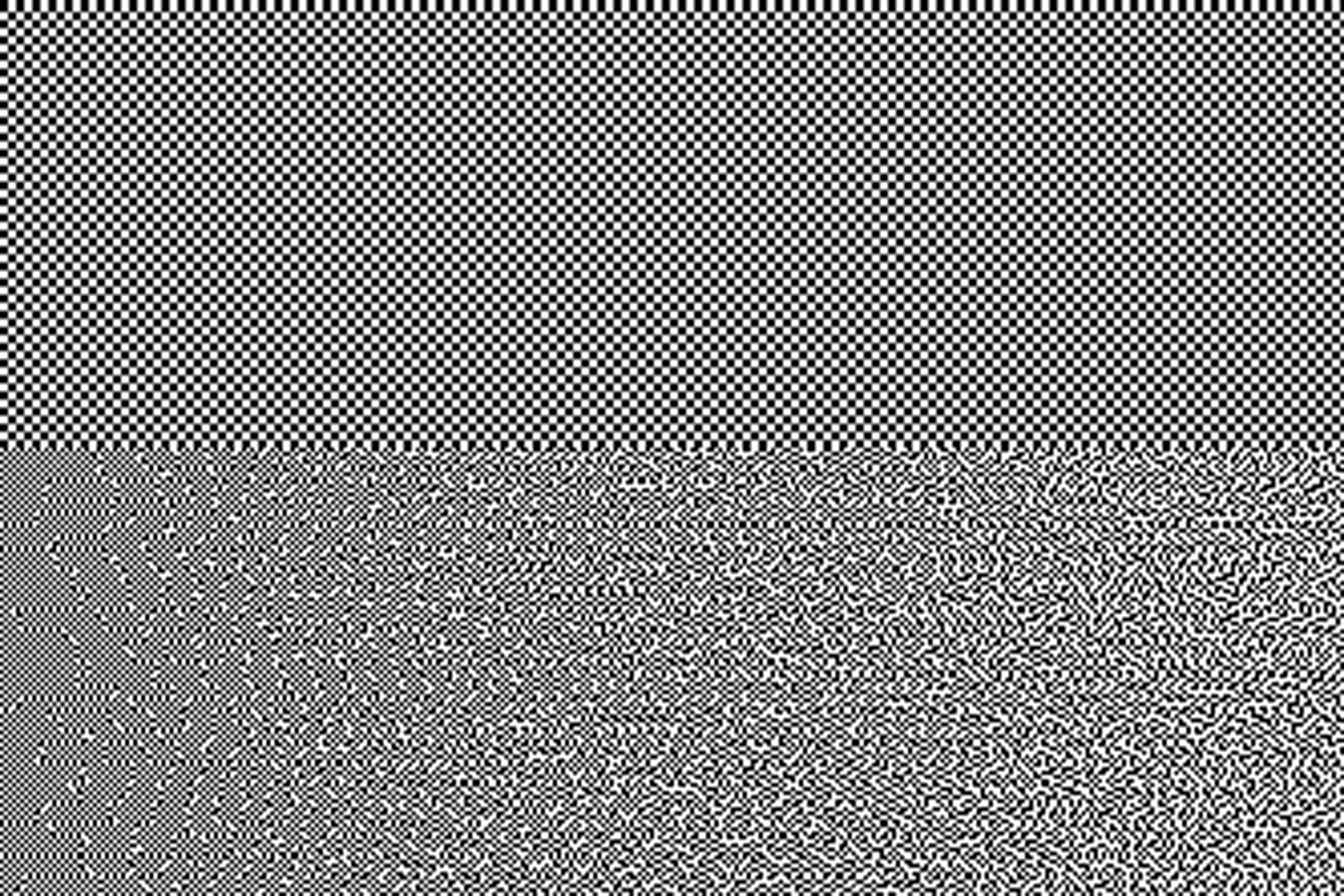“Correcting for short-range spatial non-linearities of CRT-based output devices” by Klassen and Bharat
Conference:
Type(s):
Title:
- Correcting for short-range spatial non-linearities of CRT-based output devices
Presenter(s)/Author(s):
Abstract:
Most graphical output devices exhibit what has been termed spatial
non-linearity: the effect of setting two adjacent pixels to a given
value is not the same as the sum of the effects of setting those two
pixels to the same value in isolation: checkerboards of different
frequencies do not have the same apparent luminance. We present
a method applicable to bit-mapped devices for compensating for
short-range spatial non-linearity in error-diffused images. The
modification to error diffusion is such that it can be used with
any error diffusion technique. In essence, it consists of finding
the influence of the neighbouring (output) pixels when making the
decision of whether to turn on a given pixel, and passing errors
computed accordingly
References:
1. Allebach, J. Binary display of images when spot size exceeds step size. Applied Optics 19, 15 (August 1980), 2513-2519.
2. Catmull, E. A tutorial on compensation tables. Computer Graphics 13, 2 (1979), 1-7.
3. Cole, A. Naive halftoning. In CG International ’90 (1991), Springer-Verlag, pp. 203-222.
4. Cowan, W. An inexpensive scheme for calibration of a colour monitor in terms of CIE standard coordinates. Computer Graphics 17, 3 (1983), 315-321.
5. Dong, C.-K. Perceptual printing of gray scale images. Master’s thesis, MIT, 1992.
6. Fawcett, G., and Schrack, G. Halftoning techniques using error correction. In Proceedings of the SID (1986), vol. 27, no. 4, pp. 305-308.
7. Floyd, R., and Steinberg, L. An adaptive algorithm for spatial gray scale. In Society for Information Display 1975 Digest of Technical Papers (1975), pp. 36-37.
8. Griffiths, J., and Yang, C. Algorithms for generating improved images of curved surfaces by distributing errors along Hilbert’s curve. Computer-Aided Design 19, 6 (July 1987), 299-304.
9. Klassen, R. Device Dependent Image Construction for Computer Graphics. PhD thesis, University of Waterloo, 1989. Available as technical report #CS-91-19.
10. Lyons, N., and Farrell, J. Linear systems analysis of crt displays. In Society for Information Display 89 Digest (1989), vol. 20, pp. 220-223.
11. Naiman, A., and Makous, W. Spatial non-linearities of grayscale crt pixels. In Proc. SPIE vol 1666, Human Vision, Visual Processing and Digital Display III (1992), pp. 41-56.
12. Pappas, T., and Neuhoff, D. Model-based halftoning. In Proc. SPIE/IS&T Symposium on Electronic Imaging Science and Technology, Human Vision, Visual Processing, and Digital Display H (1991).
13. Roetling, P., and Holladay, T. Tone reproduction and screen design for pictorial electrographic printing. Journal of Applied Phot. Eng. 15, 4 (1979), 179-182.
14. Velho, L., and Gomes, J. Digital halftoning with space filling curves. In Proceedings SIGGRAPH ’91 (1991), pp. 81-90.
15. Whitten, I., and Neal, R. Using Peano curves for bilievel display of continuous tone images. IEEE Computer Graphics and Applications 202 (May 1982), 47-52.
16. Wyvill, G., and McNaughton, C. Three plus five makes eight: a simplified approach to halftoning. In CG International ’91 (1991), Springer-Verlag, pp. 397-392.





